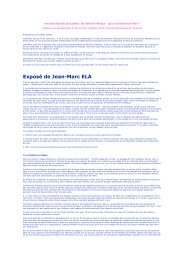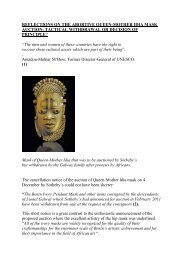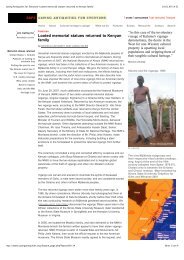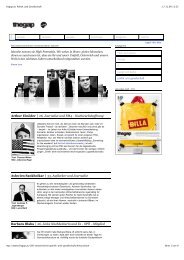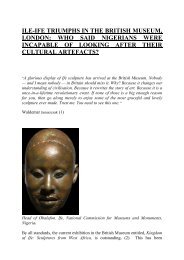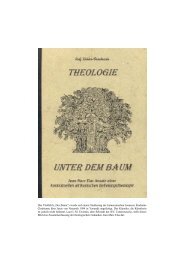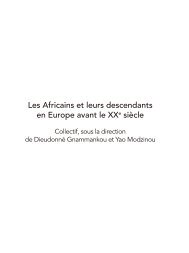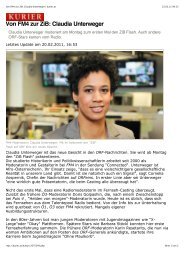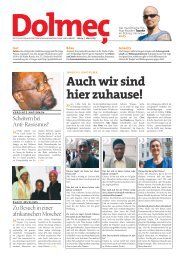White charity
White charity
White charity
- No tags were found...
Create successful ePaper yourself
Turn your PDF publications into a flip-book with our unique Google optimized e-Paper software.
finally a signification, which is a de-historicised, racialised, inferior, black subject. As the dehistorisationnullifies the process of racialisation, what is eventually left for the viewer to perceive 32is the inferior black subject.Barthes is discussing three major effects which myths achieve: 1. the naturalisation of the concept,2. the erasing of the dominant name and 3. the de-politisation.1. naturalisationUnlike what one might first suggest, myth is not hiding anything. Rather, the concept, taking overthe form, distorts “what is full, the meaning” (122). Its history is deprived. This leads to aparadoxical situation “in the mythical signifier: its form is empty but present, its meaning is absentbut full” (124). This duplicity (full meaning + empty form) of the signifier is finally responsible forhow the signification is perceived, namely as a notification or a statement of fact. In my example,neither the process of racialisation nor the process of de-historisation is visible in the signification.The inferiority of blackness seems as a fact and not as a product of ideology. The intention, bywhich the myth is defined, is “frozen, purified, made absent by [its] literal sense” (124, italics inoriginal). The fact makes the intention seem innocent. The strength of the myth is visible here, as itis playing on the analogy between the two components of the mythical signifier: the meaning and -the always partly motivated - form.Concentrating on the role of the mythologist, Barthes proposes tools how to decipher a myth. Her orhis goal would be to understand the distortion. Understanding that myth is not hiding something,but that it is an inflexion, it is possible to unfold its concept. Focusing on the mythical signifier as awhole (meaning + form) one is able “to connect a mythical schema to a general history, to explainhow it corresponds to the interests of a definite society, in short to pass from semiology to ideology”(128f).In a first-order semiological system, the “intention of the myth is too obscure to be efficacious, or itis too clear to be believed”, in a second-order system, however, myth is able “to escape thisdilemma: driven to either unveil or liquidate the concept, it will naturalize it” (129). Thistransformation from history to nature is according to Barthes of central importance. The mythassignmentis the case as hierarchies have to be transported.32 Barthes notes here that the concept appeals to a certain audience and has to be appropriated by the reader/listener. Iappreciate this acknowledgement of historical and societal circumstances and the negation of the existence ofuniversal myths. As Barthes is considering histioricity, in this case, he can be seen as a post-structuralist.A very interesting question, which Barthes is not answering is the question why readers of a myth are associating aconcept with a form. In my opinion, the concept needs driving forces behind it to define, or to create a link betweena the form and the concept in the first place.I consider methods of analysing repetitions in a discourse through discourse analysis and becoming aware ofgenealogies important approaches to answer this question. Through historicising whiteness it becomes clear that themyth of white superiority is a historical product of the last centuries. People around the world learned to appropriateit, as it is not understood in itself.14



